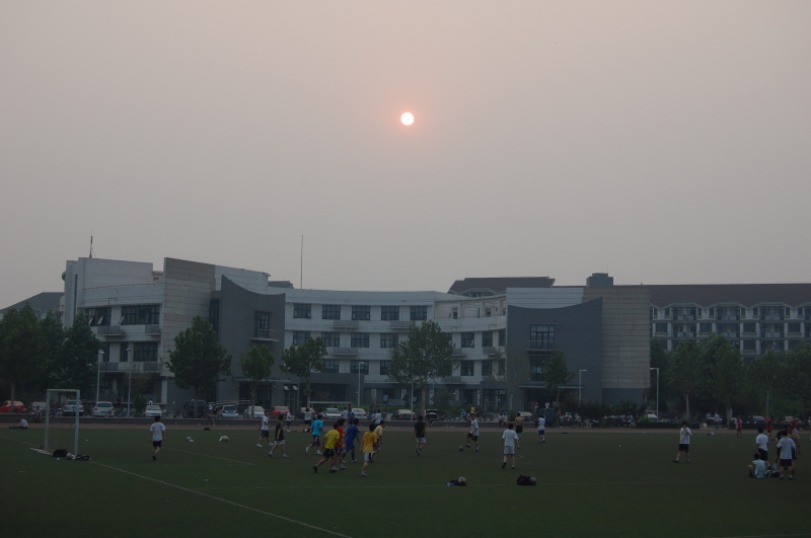From the signs on the buildings I quickly realized this was not a part Tsinghua’s campus, but still I wanted to explore. It was really fancy for a high school. In the center of the quad koi fish swam in shallow ponds, and red winged blackbirds hopped around. Towards the back of the campus, past the red-bricked school buildings, was an outdoor stadium. I then observed the wire gates and security cameras—time to go, really sorry, didn’t mean to trespass.
As I turned to leave, I noticed two guards coming at me, Pac-Man style: one from the center, and one from the right. I apologized and told them I was lost, just trying to find my way back to Tsinghua’s campus. Then I power walked out; running might be considered suspicious.
It turns out I ran to The High School Attached to Tsinghua University. Yesterday I learned that this is where the first Red Guard formed in 1966 during the Cultural Revolution. The Red Guard at Tsinghua High School was a gang composed of the children of high-level Communist officials who were inspired by Chairman Mao’s orders to purge the party of the rightists and capitalists. At first, with Mao's approval and encouragement, they began putting up big-character posters. Then they developed a bloodline theory: as the offspring of the revolution, it was their duty to pursue radical policies.
This group of high school students looked around them for the rightist and bourgeois elements of the party. It couldn’t be their parents or other high level officials. Clearly the rightist, capitalist, bourgeois, elitist, anti-Communist members undermining the party were their teachers, who still used corporal punishment, and principals.
So the Red Guard started to punish the academics, in some cases beating them to death. Mao tolerated this for two months, then sent these Red Guards to jail for years, and after that the countryside for hard labor. It turns out that being the children of high-level officials—the people who threatened Mao’s power, the so-called “rightist” members of the communist party Mao wanted to purge through the Cultural Revolution—was not an automatic invitation to rule the party, at least not back then.
Today, some of these people—the members of the original Red Guard, those who created a bloodline theory, who beat to death their teachers, who were sent to jail and then the countryside for "re-education"--control much of China. They are the very important CEOs (such as Kong Dan, the chairman of China CITIC Bank, whose father, Kong Yuan, was once the Minister of Investigation), chairmen, and party officials. Would you want to mess with them?
It was really interesting to learn all that history yesterday, and find that I had accidentally penetrated the site where the Red Guard formed. The Red Guard spread all over China’s high schools and universities during the Cultural Revolution, beating or killing their teachers and principals, or forcing them to commit suicide. From January 1967 to 1968, the Red Guard--just a bunch of university students, really--replaced the Municipal governments, ruling China alongside the military in Revolutionary Committees.
Crazy history, right?


 RSS Feed
RSS Feed